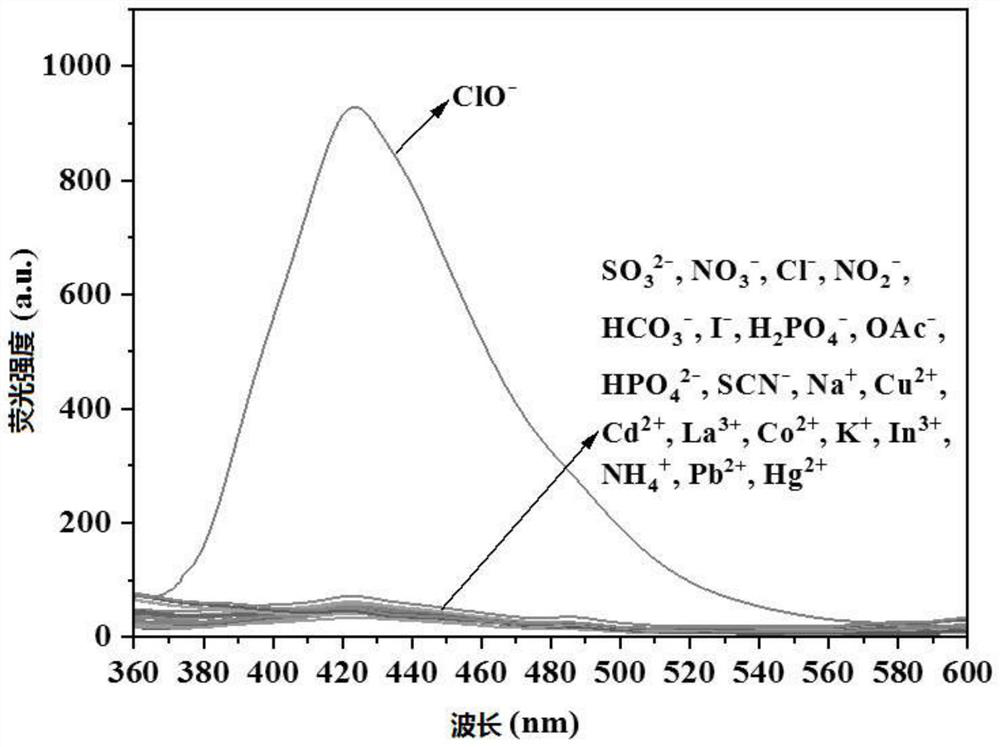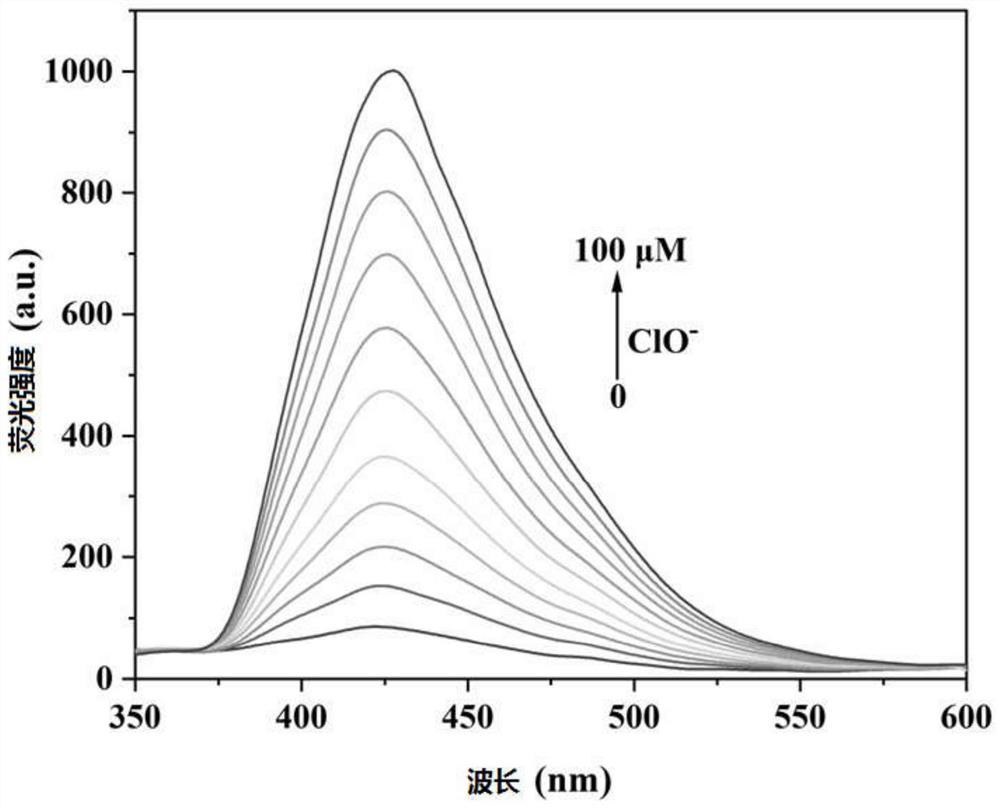Tanshinone benzimidazole fluorescent probe for detecting ClO <-> ions as well as preparation method and application of tanshinone benzimidazole fluorescent probe
A technology of benzimidazole-based fluorescent probes, applied in fluorescence/phosphorescence, chemical instruments and methods, luminescent materials, etc., to achieve the effects of improved fluorescence performance, abundant resources, and easy operation
- Summary
- Abstract
- Description
- Claims
- Application Information
AI Technical Summary
Problems solved by technology
Method used
Image
Examples
Embodiment 1
[0030] The synthetic method of tanshinone benzimidazole compound, synthetic process is:
[0031]
[0032] Specific steps are as follows:
[0033] 1) 4-(1,6,6-trimethyl-7,8,9,12-tetrahydro-6H-furo[2′,3′:1,2]phenanthrene[3,4-d]imidazole -11-yl) preparation of benzaldehyde (II):
[0034] Accurately weigh 201 mg of terephthalaldehyde and 346 mg of ammonium acetate, add them to a three-necked flask, then add 5 ml of acetic acid and stir to dissolve, accurately weigh 147 mg of tanshinone IIa, add 4 mL of acetic acid to dissolve it, add it to the dropping funnel, and use the dropping funnel Slowly add the acetic acid solution of tanshinone IIa into the three-necked flask, react at 125°C for 50 minutes, neutralize the precipitated solid with saturated aqueous sodium bicarbonate solution, filter with suction, and use petroleum ether: ethyl acetate = 300: 1 ~ 5: 1 was purified by column to obtain yellow solid compound 4-(1,6,6-trimethyl-7,8,9,12-tetrahydro-6H-furo[2′,3′:1,2]phenant...
Embodiment 2
[0039] Accurately weigh 5 mg of the fluorescent probe TPD and dissolve it in absolute ethanol to make 1×10 -3 M solution, take 100 μM stock solution and dilute it with ethanol aqueous solution (ethanol: water = 3: 7, pH = 7) to 10 mL concentration of 1 × 10 -5 M solution, followed by the addition of equimolar amounts of ClO - , SO 3 2- , NO 3 - , Cl - , NO 2 - , HCO 3 - , I - , H 2 PO 4 - , OAc - , HPO 4 2- , SCN - , Na + , Cu 2+ , Cd 2+ , La 3 + ,Co 2+ , K + , In 3+ , NH 4 + , pb 2+ , Hg 2+ Plasma, record the fluorescence spectrum of the solution. like figure 1 As shown, the fluorescence intensity of the fluorescent probe TPD does not change much when other ions are added, but when ClO is added - When the fluorescence intensity rose sharply, adding ClO - The post-ion solution showed a very obvious fluorescence enhancement phenomenon. Description of the compound as a detection ClO - Fluorescence-enhanced probes for ions with excellent selectiv...
Embodiment 3
[0041] The fluorescent probe TPD was dissolved in aqueous ethanol (ethanol:water=3:7) (1×10 -5 M), add (0~100)×10 -5 MClO - , measured by adding different concentrations of ClO - 2-Amino-3-(((E)-4-(1,6,6-trimethyl-7,8,9,12-tetrahydro-6H-furan[2′,3′:1,2 ]phenanthrene[3,4-d]imidazol-11-yl)benzylidene)amino)maleonitrile fluorescence emission spectrum, such as figure 2 As shown, adding different concentrations of ClO - The fluorescence emission spectrum of the compound with ClO - With the addition of , the fluorescence gradually increases, indicating that the compound can interact with ClO - react.
PUM
 Login to View More
Login to View More Abstract
Description
Claims
Application Information
 Login to View More
Login to View More - R&D
- Intellectual Property
- Life Sciences
- Materials
- Tech Scout
- Unparalleled Data Quality
- Higher Quality Content
- 60% Fewer Hallucinations
Browse by: Latest US Patents, China's latest patents, Technical Efficacy Thesaurus, Application Domain, Technology Topic, Popular Technical Reports.
© 2025 PatSnap. All rights reserved.Legal|Privacy policy|Modern Slavery Act Transparency Statement|Sitemap|About US| Contact US: help@patsnap.com



